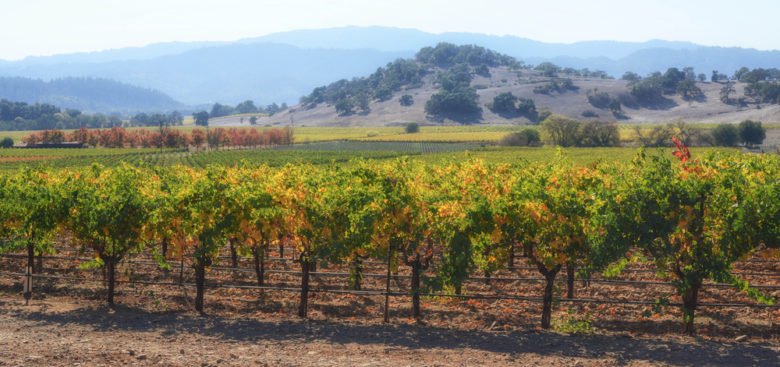A Brief History of Winemaking in America

If you’ve ever taken a trip to Napa Valley you’d know that there is a lot of beautiful scenery. As its name suggests, Napa Valley is surrounded by mountains, with plenty of sunlit days, rainfall, and cold winters. This is exactly what makes it the perfect climate for winemaking in America. If you’ve ever searched “liquor store near me” then you might be interested in the rich history of winemaking in America.
Wine has been a part of American culture since its earliest days, even before there was a United States. Did you know that George Washington was a vintner? Washington’s Mount Vernon estate in Virginia had a vineyard that began producing wine in 1798, and within the next 50 years, more than 1.3 million gallons of wine were produced from it. But wine-making didn’t just happen in the states of America’s founders. The first vines were planted in what would become the United States as early as 1623. In the mid-1700s, German immigrants brought with them the knowledge of winemaking from Europe, and by 1740, wine had become an important export for New York, Pennsylvania, and Delaware.
The modern era of winemaking in America began in the late 1800s and early 1900s when European immigrants brought their love of wine to the country’s West Coast. As French settlers arrived in the New World, they brought with them their winemaking techniques, which they continued to hone at home and on the vineyard.
People often focus on American winemaking as growing out of the need to produce sacramental wines for religious purposes—but there’s another side to the story. While wine was seen as an appropriate drink for Sunday services, it sometimes got a bad rap because it was seen as an indulgent drink that was too fancy for everyday consumption—hence why it needed to be shipped across state lines to be sold legally. It wasn’t until 1810 that New York lifted its ban on importing wines directly from Europe and started producing its own; this created a boom in wineries and paved the way for many more to follow. A long way off from being able to search for a “liquor store near me”.
America’s first commercial winery was founded in 1776 by French immigrant Jean-Baptiste Labat in New Orleans, who brought the knowledge of wine cultivation to the colonies. But it was settlers from Spain who introduced viticulture to California and the surrounding area in 1539, when they settled in what is now Los Angeles.
In the early part of the 1800s, America was growing by leaps and bounds as an agricultural producer. The country was growing rapidly: immigrants from all over the world were flocking to America for work, and industrialization was booming. This rapid growth resulted in a population boom that needed to be fed—and wine happened to be a popular food product at the time.
The first wave of immigrants from places like Germany, France and Italy came in during the early-to-mid 19th century and brought with them their knowledge of winemaking. The second wave of immigrants came from Portugal and Spain in the late 19th century; these newcomers brought with them a knowledge of harvesting grapes and making wine. They also brought some much-needed labor to assist with harvest time. All of this new information combined with an increased demand for wine set up the perfect conditions leading to you being able to find a “liquor store near me”.
Vineyards continued to flourish as new immigrants arrived and began to plant vines. By 1825, there were over 100 vineyards—most planted by German immigrants—along the Ohio River Valley. In 1819, a group of Bostonians formed an association for growing grapes and making wine; this became the oldest existing winery in America. Only two decades later, in 1831, a German immigrant named Nicholas Longworth imported several varieties of French-American hybrid grapes that he planted at his Château Montrose estate in Ohio. As these vines grew and thrived, Longworth became one of our country’s leading winemakers for the next half-century.
American winemaking almost died during Prohibition. If you were living in the US at the time, Prohibition made wine drinking practically illegal, and the wine supply dried up as vines were ripped out to make room for growing grapes that could be used for other things. The only survivors were those who kept their heads down and stayed out of trouble. During Prohibition, non-alcoholic grape juice was made from California grapes—but even that couldn’t save the wine industry from collapsing after the 18th Amendment went into effect. When Prohibition ended, however, so did American wine’s long period of dormancy—in fact, it came back stronger than ever and continues to grow each year.
But if you were living in Europe during this period, wine must have seemed like an exotic luxury item—not just a liquid to drink, but something that required special skills and equipment to create. Many European immigrants arrived in America knowing little else about winemaking than what they’d learned from their parents or grandparents back home. Thus began a period of renewed interest in American winemaking.
While Americans have been making wine since some of the first colonists planted their vineyards, it wasn’t truly until after prohibition that wineries really started popping up all over the country. The 1950s saw thousands of new vineyards being established, which is when most of the American wine industry’s classic grapes were planted: Cabernet Sauvignon being one of them.
Next time you search “liquor store near me” think about the rich history of American winemaking.
